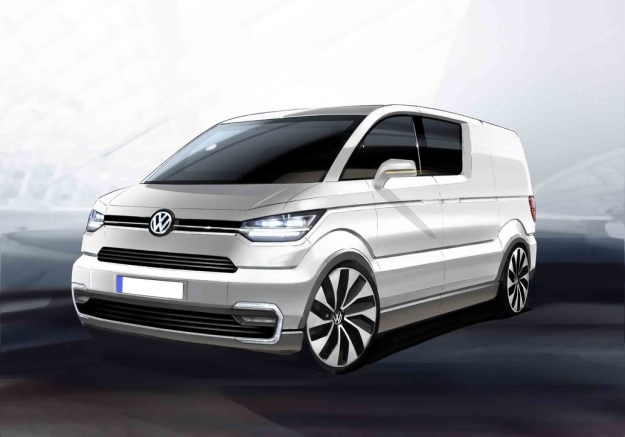 Volkswagen will unveil an all-electric concept car at the 2013 Geneva Motor Show next week. It may not be as sexy as the XL1 “one-liter” car, but the e-Co-Motion concept could be very useful in the fight against global warming. It’s hard to imagine too many people cruising around in torpedo-shaped XL1s, but a small green commercial van like the e-Co-Motion has many applications.
Volkswagen will unveil an all-electric concept car at the 2013 Geneva Motor Show next week. It may not be as sexy as the XL1 “one-liter” car, but the e-Co-Motion concept could be very useful in the fight against global warming. It’s hard to imagine too many people cruising around in torpedo-shaped XL1s, but a small green commercial van like the e-Co-Motion has many applications.
Unlike the Azure Dynamics Transit Connect or Nissan e-NV200, the e-Co-Motion was designed from the start as an electric van. To maximize space, Volkswagen put the battery pack, motor, and transmission under the floor, creating a flat surface for loading cargo.
The result is a 15-foot long vehicle with 162 cubic feet of cargo space that can carry 1,760 pounds of stuff. A Ford Transit Connect Van is also about 15 feet long, has 129.6 cubic feet of cargo space, and can carry 1,600 pounds.
Volkswagen sees the e-Co-Motion as part of a green logistics chain, with small electric vans making short delivery trips and cutting down on emissions in the process.
“Freight trains and conventional or hybrid-powered high capacity lorries would deliver goods up to the city limits. Then, at transfer stations, smaller electric delivery vans would take over. Their predictable travel routes and fixed depots would simplify battery charging and equipment maintenance,” Dr. Eckhard Scholz, speaker of Volkswagen’s brand board of management, said,
According to VW, the e-Co-Motion could be offered in other body styles. A passenger wagon version could be as close as we get to a new version of the classic Type 2 bus.
We’d also like to hear more about the e-Co-Motion’s performance, particularly its range and charging times. That information should become available at the van’s Geneva debut.


